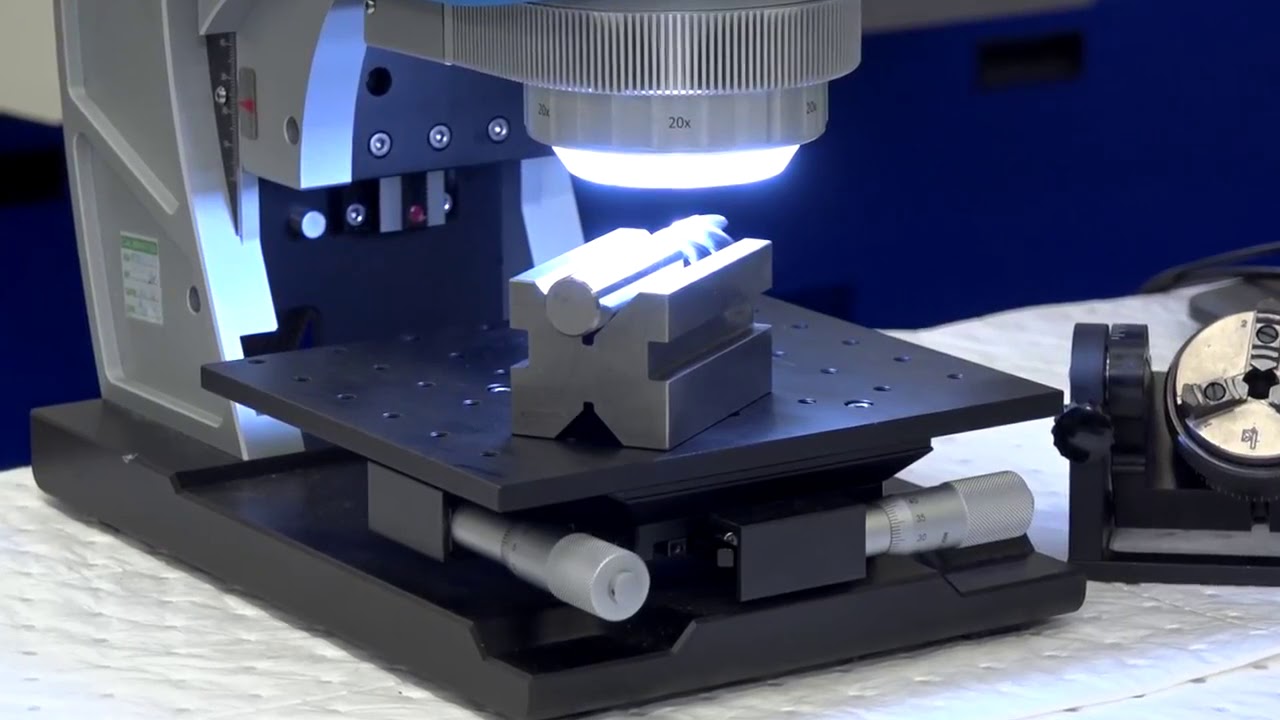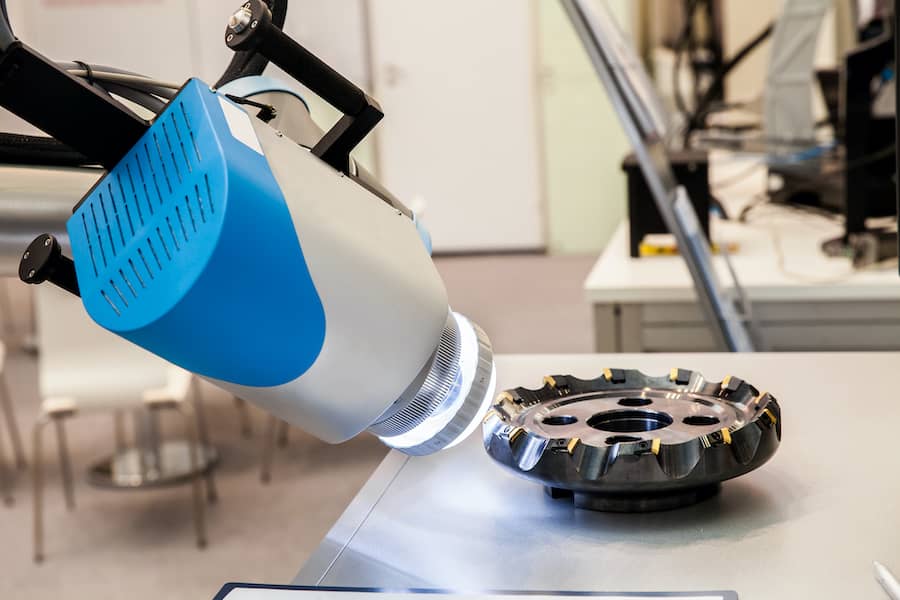Fine Ceramics in Next-Generation Metrology Equipment
KYOCERA Fineceramics Precision GmbH
The advances in the technology of metrology have led to the development of measuring devices that are smaller, more responsive and more accurate than ever before. Yet, the reliability of these devices is significantly influenced by the materials of which they are made. These materials should exhibit properties that meet the conditions of their application. With the ever-increasing market demands, these materials have to be amenable to miniaturisation without losing their efficiency. Technical ceramics, also known as fine ceramics, have been proven to meet such requirements, and the innovations around their manufacture are poised to meet future requirements, as well. Here, we explore how technical ceramics can play a major role in the design of next-generation metrology equipment.

Figure 1. Optical metrology equipment in action (KYOCERA).
Metrology has innumerable uses such as prototyping, design and engineering, quality control and assurance, production and assembly, and the list goes on. Its evolution over the years has seen a shift from inspection of products being carried out at stationary dedicated points to the measuring system brought to the point of production. With the advent of new technology, such as optical measurement systems, 3D scanning, and x-ray measurement systems, metrology is now more portable and more flexible.
Technical ceramics are fundamental drivers of these technological advances because of their unique properties, some of which are lightweight, resistance to temperature fluctuations, stiffness, durability, dimensional stability, toughness, corrosion and wear resistance. They are extremely reliable materials, with long service life, all the while maintaining the highest level of precision and accuracy under a wide range of environmental conditions.
Fine ceramics, the future of metrology
The design of metrology devices is always bound to face several challenges, including the shape complexities, surface texture/roughness, composition of device structures, and how deviations in any of these parameters could affect the performance of the device. Minute dimensional measurements could be limited by certain changes in the materials’ physical properties. That is why it is crucial that the materials are resistant to such changes that they enable high-precision measurements.
Fine ceramics, for instance, are replacing other materials, like metal alloys, in applications such as precision-fixed gauges, gliders, structural beams, spindles, plates, and high-speed scanner mirrors. Therefore, it is instructive to thoroughly understand fine ceramics and their properties, especially at the nanoscale, where materials tend to behave differently. This enables the proper adaptation for metrology uses in a host of applications that include but are not limited to the following systems.

Figure 2. Surface metrology system measuring the topography of a precision surface.
Dimensional inspection systems
Coordinate-measuring machines (CMMs) are amongst the foremost applications of these systems. They are devices that measure the geometry of an object via sensing of distinct localities using a probe. They can be almost entirely made from ceramic, which transcends other materials, such as steel and aluminium, in stability under wide temperature variations and has a high stiffness-to-weight ratio. The manufacture of CMMs with ceramics is possible through technology that allows for the creation of monolithic components using materials such as silicon infiltrated silicon carbide (SiSiC). Alternatively, they can feature ceramics only in selected parts, as in the palpation balls in their probe stems. It is a requirement that the material used to make these probes does not cause additional errors in measurement by influencing the quantity being measured. Ceramics, such as silicon nitride (Si3N4), are suitable because of their low weight and high stiffness.
Optical measurements
Non-contact 3D scanning methods that are capable of higher throughputs without a decline in accuracy are being developed using laser/radar technology and photogrammetry. These technologies are only as accurate as are the components of which they are made. Composites of alumina (Al2O3) and zirconium oxide (ZrO2) are particularly suitable for the manufacture of components that require opaqueness and a high level of light absorption, in addition to mechanical properties like stiffness and wear-resistance.
High precision motion control systems
Ceramics are useful in the production of high-precision positioning equipment through the manufacture of components such as air bearings and precision actuators. Air bearings, in contrast with mechanical bearings, are contactless, and so can achieve motions free of vibration, wear, friction and the effect of hysteresis. Air bearings produced from ceramics, such as silicon carbide (SiC), can achieve high-velocity control and geometric performance.
Vibration isolation systems
Fine ceramics can also be used in the development of vibration isolation technologies, which are used in the research and manufacturing fields to nullify unwanted vibrations for nano-precision processes. Piezoelectric sensors, actuators and transducers are at the centre of newer vibration isolation techniques used to attenuate ambient ground motions. Fine ceramics are very suitable for the design of these components because of their electromagnetic and mechanical properties.
Surface measurement systems
These systems measure the topography of precision surfaces and feature components such as datum bars, which can be manufactured from alumina (Al2O3). They serve as a support base in reference to other moving device components. As such, it needs to be extremely rigid with a high surface finish; otherwise, it would impact the accuracy of the measurements.
Automation systems
Human effort in production and manufacturing has been steadily replaced by automated systems in processes such as material handling and assembly, but measurement processes have only recently started to be adapted for automated systems. Technical ceramics help in the design of devices which can be programmed for robots to perform real-time in-process measurements while in a production line, for example.
All of the above applications are possible because of the unique properties of fine ceramics. Figure 3 below shows a visual comparison between different ceramic materials showing how they weigh against each other based on particular properties necessary for different applications.

Figure 3. A comparison chart of various technical ceramics from KYOCERA Fineceramics Precision based on their properties
How can you take advantage of technical ceramics?
With the continuously increasing technological demands of innovation in the world of fine ceramics, KYOCERA Group, a global leader in advanced technical ceramic production, is perfectly positioned to help engineers, manufacturers and researchers realise their objectives. KYOCERA Group works in tandem with its clients every step of the way to ensure that their visions are met. State of the art production processes and continuous research and development to create new materials that add to their portfolio of 200+ materials are only but a few aspects that have enabled KYOCERA Group to impact the ceramics industry for over three decades.
Visit the KYOCERA Fineceramics Precision supplier page for more information on their materials listed on Matmatch and to get in direct contact with them.

Figure 4. Automatic optical measurement system performing a multi-edge measurement.
Artikel von <a href=/suppliers/hcsc-kyocera-fineceramics-precision-gmbh> KYOCERA Fineceramics Precision GmbH </a>KYOCERA Fineceramics Precision GmbH
KYOCERA Fineceramics Precision GmbH is a leading producer of advanced technical ceramic powders and parts with specialist know-how in the engineering and manufacturing of high-end complex parts in small to medium series production. We are one of only a few vertically integrated producers offering both, ceramics from technical oxide and state-of-the-art non-oxide materials, out of one production site. Highest material uniformity and quality standards required for sophisticated applications stand at the center of every product solution. We develop products in a joint engineering approach with customers, taking into account individual requirements and specifications and built up comprehensive engineering expertise and strong customer relationships since more than 30 years

